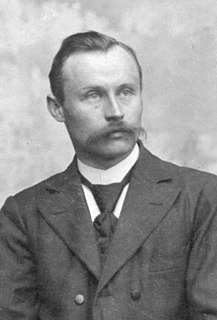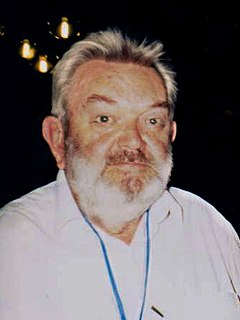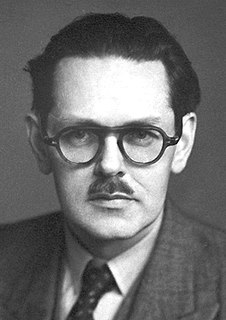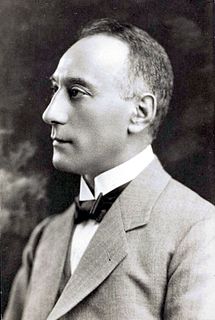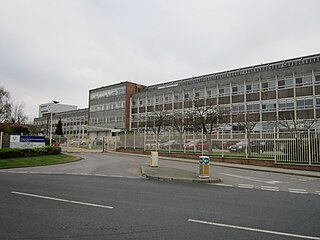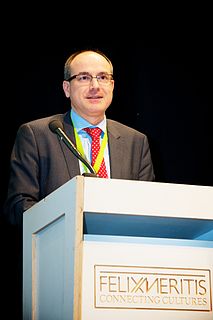| Jan Boldingh | |
|---|---|
Jan Boldingh | |
| Born | 3 January 1915 Buitenzorg |
| Died | 4 August 2003 (aged 88) Schiedam |
| Nationality | Dutch |
| Alma mater | Utrecht University |
| Scientific career | |
| Fields | chemistry |
| Doctoral advisor | Fritz Kögl |
Jan Boldingh (3 January 1915, Buitenzorg – 4 August 2003, Schiedam) was a noted Dutch chemist.

Schiedam is a city and municipality in the province of South Holland in the Netherlands. It is part of the Rotterdam metropolitan area. The city is located west of Rotterdam, east of Vlaardingen, and south of Delft. In the south it is connected with the village of Pernis by the Beneluxtunnel.

The Netherlands is a country located mainly in Northwestern Europe. The European portion of the Netherlands consists of twelve separate provinces that border Germany to the east, Belgium to the south, and the North Sea to the northwest, with maritime borders in the North Sea with Belgium, Germany and the United Kingdom. Together with three island territories in the Caribbean Sea—Bonaire, Sint Eustatius and Saba— it forms a constituent country of the Kingdom of the Netherlands. The official language is Dutch, but a secondary official language in the province of Friesland is West Frisian.
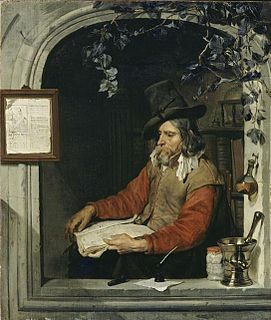
A chemist is a scientist trained in the study of chemistry. Chemists study the composition of matter and its properties. Chemists carefully describe the properties they study in terms of quantities, with detail on the level of molecules and their component atoms. Chemists carefully measure substance proportions, reaction rates, and other chemical properties. The word 'chemist' is also used to address Pharmacists in Commonwealth English.
Boldingh studied chemistry at Utrecht University. He received a PhD in 1942 for his thesis 'Synthetische onderzoekingen over het chromofore systeem van lumi-auxonstudies' on auxines in the group of Fritz Kögl. He worked for a short period at the Philips Natuurkundig Laboratorium in Eindhoven, but moved to Unilever in 1944 (1944: research department of Van den Bergh & Jurgens in Rotterdam; 1946: research department in Zwijndrecht; 1955: Unilever Research Laboratory in Vlaardingen). Between 1952 and 1967, Boldingh and H.A. Boekenoogen lead the laboratory together, but after 1967 Boldingh lead the laboratory by himself until his retirement in 1980. From 1964 on, Boldingh served simultaneously as a professor Organic Chemistry at Utrecht University.

Utrecht University is a university in Utrecht, the Netherlands. Established 26 March 1636, it is one of the oldest universities in the Netherlands. In 2016, it had an enrolment of 29,425 students, and employed 5,568 faculty and staff. In 2011, 485 PhD degrees were awarded and 7,773 scientific articles were published. The 2013 budget of the university was €765 million.

Unilever is a British-Dutch transnational consumer goods company co-headquartered in London, United Kingdom and Rotterdam, Netherlands. Its products include food and beverages, cleaning agents, beauty products, and personal care products. It is Europe’s seventh most valuable company. Unilever is one of the oldest multinational companies; its products are available in around 190 countries.
Boldingh introduced a number of new analytic techniques (such as (gas-)chromatography, the coupling of gas chromatography and mass spectrometry, NMR and other forms of spectroscopy) in order to study complex problems in an industrial context. Boldingh was very interested in nutrition research, and especially the role of fats in nutrition. He stimulated the studies by David A. van Dorp concerning the role of unsaturated fatty acids that served as a precursor to prostaglandins (especially arachidonic acid and prostaglandin E2), in which the Unilever Laboratory collaborated intensively with Sune K. Bergström, who would receive a Nobel prize in 1982 for his studies in this field.

Arachidonic acid is a polyunsaturated omega-6 fatty acid 20:4(ω-6), or 20:4(5,8,11,14). It is structurally related to the saturated arachidic acid found in cupuaçu butter.

Prostaglandin E2 (PGE2), also known as dinoprostone, is a naturally occurring prostaglandin which is used as a medication. As a medication it is used in labor induction, bleeding after delivery, termination of pregnancy, and in newborn babies to keep the ductus arteriosus open. In babies it is used in those with congenital heart defects until surgery can be carried out. It may be used within the vagina or by injection into a vein.
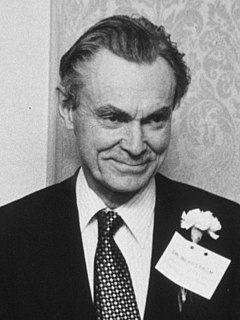
Karl Sune Detlof Bergström was a Swedish biochemist. In 1975, he was appointed to the Nobel Foundation Board of Directors in Sweden, and was awarded the Louisa Gross Horwitz Prize from Columbia University, together with Bengt I. Samuelsson. He shared the Nobel Prize in Physiology or Medicine with Bengt I. Samuelsson and John R. Vane in 1982, for discoveries concerning prostaglandins and related substances.
In 1964 Boldingh became member of the Royal Netherlands Academy of Arts and Sciences. [1]

The Royal Netherlands Academy of Arts and Sciences is an organization dedicated to the advancement of science and literature in the Netherlands. The academy is housed in the Trippenhuis in Amsterdam.

